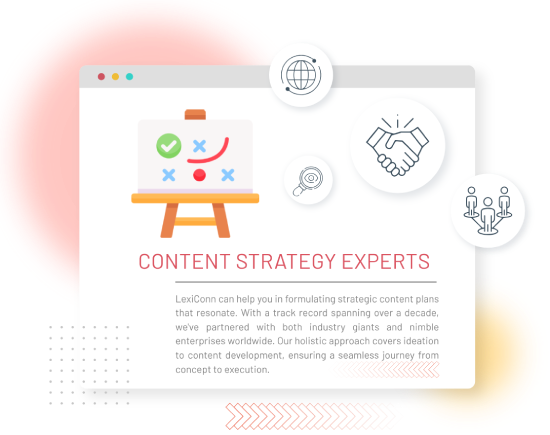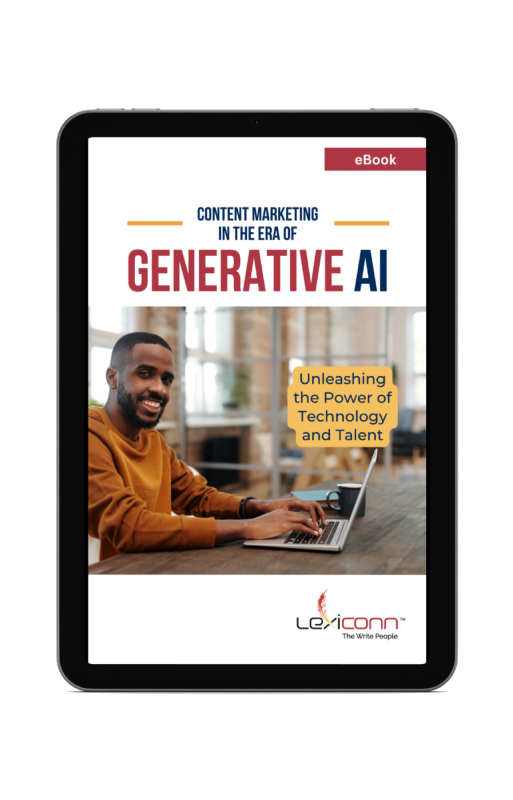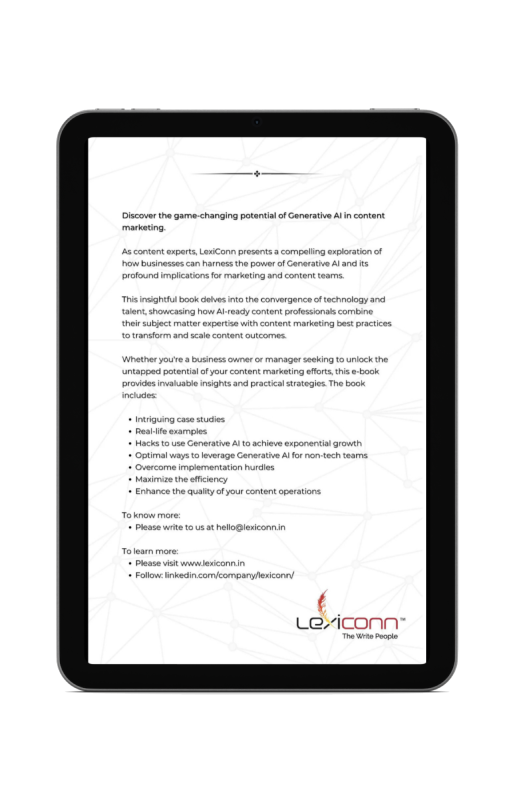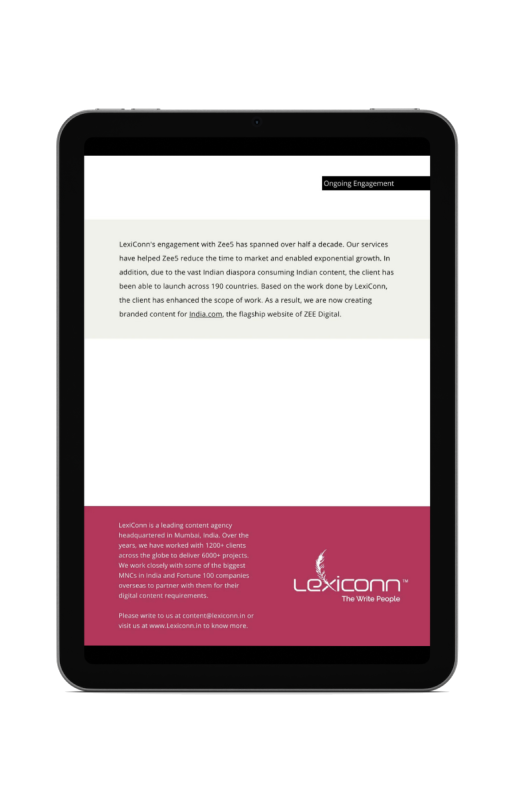Demand Generation with Content: How Tech Companies Can Drive New Leads
In the fast-paced world of technology, where innovation is constant, and competition is fierce, tech companies face a unique challenge: how to stand out and attract the right audience. For many, the answer lies in demand generation with content. But what exactly does that mean, and how can content truly drive new leads for tech companies?
Imagine this: A potential customer is searching for a solution to a complex problem. They come across a well-crafted whitepaper or an insightful blog post that not only addresses their pain points but also positions your company as the go-to expert. That’s the power of content in demand generation. It’s not just about creating awareness; it’s about creating demand for your product or service by providing value upfront.
In this blog, we’ll explore how tech companies can leverage content to generate demand, nurture leads, and ultimately drive revenue. From understanding the fundamentals of demand generation to crafting a content strategy that resonates with your audience, this guide will provide actionable insights and real-world examples to help you succeed.
The Importance of Content in Demand Generation
Content serves as the foundation for demand generation by providing valuable information that addresses the needs and challenges of the target audience. High-quality content can:
- Educate Prospects: Inform potential customers about solutions to their problems.
- Build Trust: Establish credibility and authority in the industry.
- Engage Audiences: Encourage interaction and foster relationships.
- Drive Conversions: Guide prospects toward making purchasing decisions.
What is Demand Generation, and Why is Content Critical?
1. Understanding Demand Generation
Demand generation is the process of creating awareness and interest in your products or services, with the ultimate goal of driving revenue. Unlike lead generation, which focuses on capturing contact information, demand generation is about building long-term relationships with your audience by providing value at every stage of the buyer’s journey.
For tech companies, demand generation is especially important because the products and services they offer are often complex and require education. Potential customers need to understand not only what you’re selling but also why it matters and how it can solve their problems.
2. The Role of Content in Demand Generation
Content is the backbone of demand generation. It’s how you educate your audience, build trust, and position your company as a thought leader. Whether it’s a blog post, a whitepaper, a webinar, or a case study, content helps you connect with your audience on a deeper level.
For example, a SaaS company might use a series of blog posts to explain the benefits of cloud-based solutions, followed by a webinar that dives deeper into specific use cases. By providing valuable content at each stage of the buyer’s journey, the company can nurture leads and guide them toward a purchase decision.
How Content Drives Demand Generation for Tech Companies
1. Creating Awareness with Top-of-Funnel Content
At the top of the funnel (TOFU), the goal is to create awareness and attract potential customers. This is where educational and informative content comes into play.
- Blog Posts: Blog posts are a great way to address common pain points and answer frequently asked questions. For example, a tech company specializing in cybersecurity might publish a blog post titled “5 Common Cybersecurity Threats and How to Prevent Them.”
- Infographics: Infographics are visually appealing and easy to digest, making them ideal for sharing on social media. A tech company could create an infographic that explains the benefits of AI in business operations.
- Videos: Videos are highly engaging and can be used to explain complex topics in a simple way. A short video explaining how your product works can be a powerful tool for creating awareness.
2. Engaging Prospects with Middle-of-Funnel Content
Once you’ve captured the attention of potential customers, the next step is to engage them with middle-of-funnel (MOFU) content. This content should provide more in-depth information and help prospects see the value of your solution.
- Whitepapers and eBooks: These are ideal for providing detailed insights into specific topics. For example, a tech company might create a whitepaper on “The Future of AI in Healthcare” to showcase their expertise.
- Webinars: Webinars allow you to interact with your audience in real-time and provide valuable insights. A webinar on “How to Choose the Right CRM for Your Business” can help prospects understand the benefits of your solution.
- Case Studies: Case studies are a powerful way to demonstrate the success of your product or service. By showcasing real-world examples, you can build trust and credibility with your audience.
3. Converting Leads with Bottom-of-Funnel Content
At the bottom of the funnel (BOFU), the goal is to convert leads into customers. This is where content that addresses specific objections and provides a clear call-to-action (CTA) comes into play.
- Product Demos: A product demo allows potential customers to see your solution in action. It’s an opportunity to highlight key features and benefits and address any concerns.
- Free Trials: Offering a free trial is a great way to let prospects experience your product firsthand. Make sure to provide clear instructions and support to help them get started.
- Customer Testimonials: Testimonials from satisfied customers can be a powerful tool for building trust and encouraging prospects to take the next step.
Crafting a Content Strategy for Demand Generation
1. Define Your Target Audience
The first step in creating a content strategy for demand generation is to define your target audience. Who are you trying to reach? What are their pain points, challenges, and goals? By understanding your audience, you can create content that resonates with them and addresses their specific needs.
2. Map Content to the Buyer’s Journey
Once you’ve defined your target audience, the next step is to map content to the buyer’s journey. This means creating content for each stage of the funnel, from awareness to consideration to decision.
- TOFU Content: Focus on creating awareness and attracting potential customers. This could include blog posts, infographics, and videos.
- MOFU Content: Provide more in-depth information to engage prospects. This could include whitepapers, webinars, and case studies.
- BOFU Content: Address specific objections and encourage prospects to take the next step. This could include product demos, free trials, and customer testimonials.
3. Leverage SEO to Drive Traffic
Search engine optimization (SEO) is critical for ensuring that your content reaches the right audience. By optimizing your content for relevant keywords, you can improve your search engine rankings and drive more organic traffic to your website.
- Keyword Research: Use tools like Google Keyword Planner and SEMrush to identify relevant keywords for your industry.
- On-Page SEO: Optimize your content for on-page SEO by including keywords in your title tags, meta descriptions, and headers.
- Backlinks: Build backlinks to your content by reaching out to industry influencers and publishing guest posts on reputable websites.
4. Promote Your Content
Creating great content is only half the battle; you also need to promote it to reach your target audience. Here are some ways to promote your content:
- Social Media: Share your content on social media platforms like LinkedIn, Twitter, and Facebook. Use hashtags and engage with your audience to increase visibility.
- Email Marketing: Send your content to your email list to keep your audience engaged and informed.
- Paid Advertising: Use paid advertising to promote your content to a wider audience. Platforms like Google Ads and LinkedIn Ads allow you to target specific demographics and interests.
5. Measure and Optimize
Finally, it’s important to measure the performance of your content and make adjustments as needed. Use analytics tools like Google Analytics and HubSpot to track key metrics such as page views, bounce rates, and conversion rates.
- A/B Testing: Experiment with different headlines, visuals, and CTAs to see what resonates with your audience.
- Content Audits: Regularly review your content to identify gaps and opportunities for improvement.
- Feedback: Gather feedback from your audience to understand what they find valuable and what they’d like to see more of.
Real-World Examples of Demand Generation with Content
1. HubSpot: Inbound Marketing
HubSpot is a prime example of how content can drive demand generation. The company’s inbound marketing strategy focuses on creating valuable content that attracts, engages, and delights customers. From blog posts and eBooks to webinars and certifications, HubSpot provides a wealth of resources that help businesses grow.
2. Salesforce: Thought Leadership
Salesforce uses content to position itself as a thought leader in the CRM space. The company’s blog, Salesforce Blog, covers a wide range of topics, from industry trends to customer success stories. By providing valuable insights, Salesforce builds trust and credibility with its audience.
3. Slack: Customer-Centric Content
Slack’s content strategy focuses on the needs of its customers. The company’s blog, Slack Blog, features stories about how businesses are using Slack to improve communication and collaboration. By showcasing real-world examples, Slack demonstrates the value of its product and drives demand.
Challenges and Best Practices in Demand Generation with Content
1. Challenges
- Content Overload: With so much content available online, it can be difficult to stand out. To overcome this, focus on creating high-quality, unique content that provides real value to your audience.
- Measuring ROI: It can be challenging to measure the ROI of your content efforts. Use analytics tools to track key metrics and make data-driven decisions.
- Keeping Up with Trends: The tech industry is constantly evolving, and it’s important to stay up-to-date with the latest trends and developments. Regularly review your content strategy to ensure it remains relevant.
2. Best Practices
- Focus on Quality Over Quantity: It’s better to create a few high-quality pieces of content than to produce a large volume of low-quality content.
- Be Consistent: Consistency is key to building trust and credibility with your audience. Create a content calendar and stick to a regular publishing schedule.
- Engage with Your Audience: Don’t just publish content and forget about it. Engage with your audience by responding to comments, answering questions, and participating in discussions.
How LexiConn Can Help
At LexiConn, we specialize in helping tech companies leverage content for demand generation. As a leading content marketing agency in Mumbai and a trusted content writing agency in India, we offer a range of services, including:
- Content Strategy Development: We help you create a content strategy that aligns with your business goals and resonates with your target audience.
- Content Creation: Our team of expert writers creates high-quality content that drives demand and generates leads.
- SEO Optimization: We optimize your content for search engines to ensure it reaches the right audience.
- Content Promotion: We help you promote your content through social media, email marketing, and paid advertising.
Visit us at www.lexiconn.in or drop us a line at [email protected] to learn more about our services. We also offer a free 30-minute content consultation session to help you get started. Book your session now.




